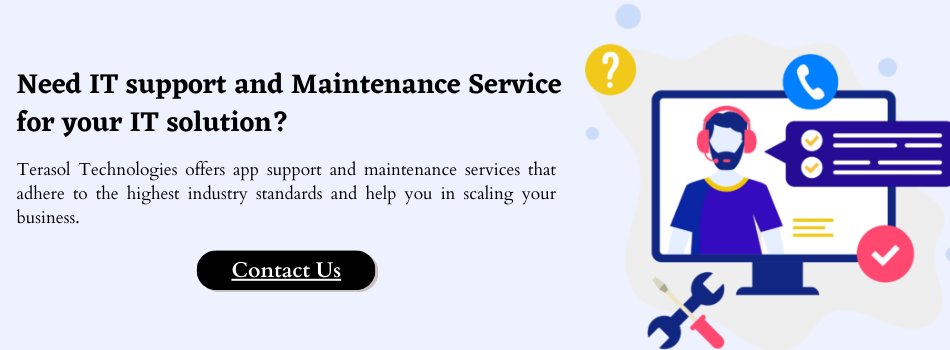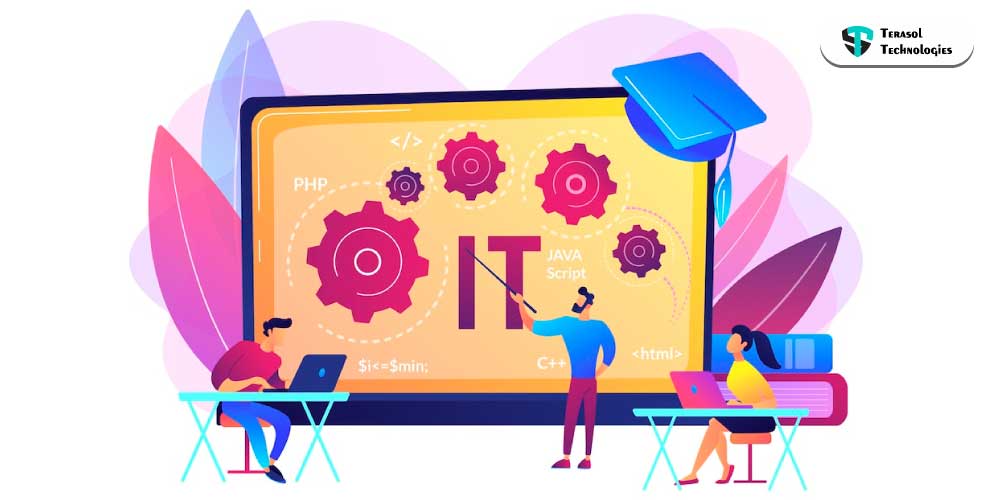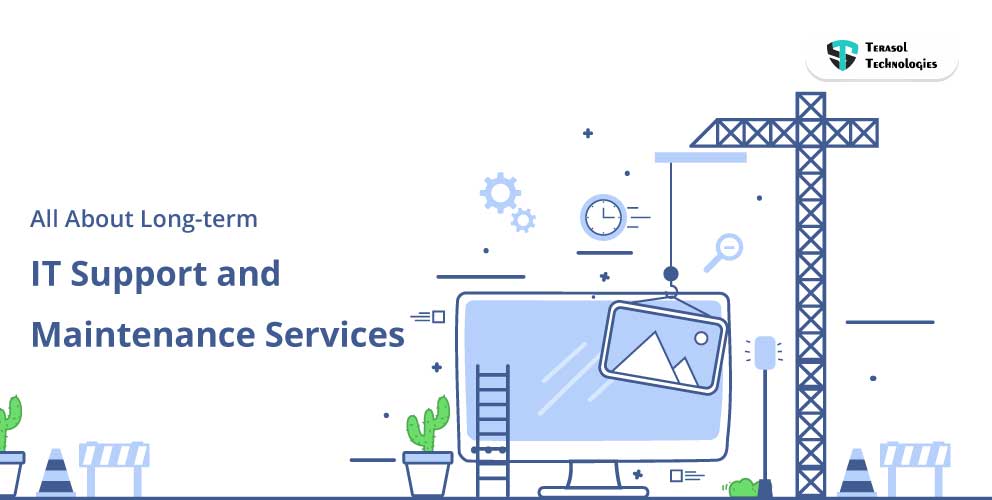Effective IT Maintenance Service Setup Plan
Developing or purchasing a software solution and integrating it into your organizational infrastructure are just the first two steps in the software maintenance lifecycle of your business.
You'll be faced with the requirement to start supporting, maintaining, and correctly "evolving" your software system the day it goes online.
Defects, third-party integration, and infrastructure-related changes, as well as performance concerns, design flaws, and new needs for the ever-changing real-world environment, all affect the software system during its evolution phase.
IT maintenance service and support refer to a collection of operations aimed at ensuring the stability, scalability, high performance, and security of software.
Estimating the scope and required resources, designing the maintenance and support process, selecting a sourcing model, implementation, launch (features) and continuous maintenance are all elements in the software support and maintenance setup plan.
Depending on the characteristics of the software and its underlying infrastructure, as well as the breadth of the required support and maintenance activities, the setup strategy will vary.
Still thinking if software support and maintenance services are beneficial for your business. Know here how it can help your business grow exponentially.
Support and IT Maintenance Services Setup Plan
Here we explain some general steps that are indicative of all IT maintenance services.
Step 1: Calculate the cost of support and IT maintenance, scope and resources
Timeframe: 2-4 weeks
To evaluate the breadth of the support and maintenance tasks, examine the software's connected infrastructure, potential new features, and improvements. Determine its current and planned user pool too.
Assess the scope of the project versus current in-house/outsourced resources, such as dedicated IT specialists and maintenance tools. Consider how important it is to keep track of your support process and workers.
Our IT team helps you to determine your needs and requirements and find the optimal package for your company.
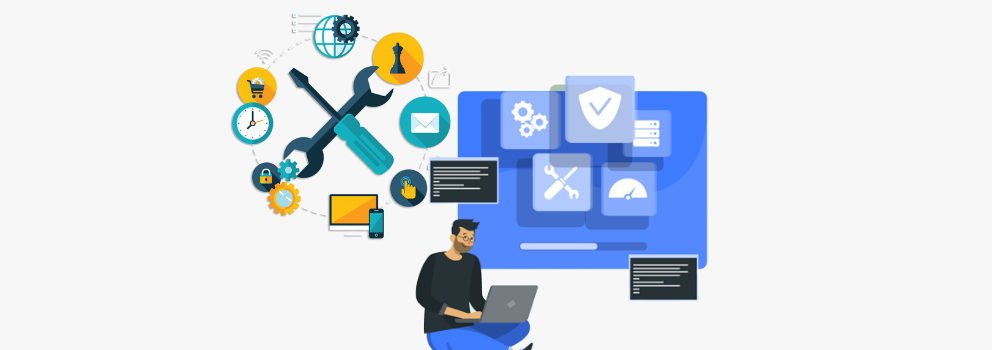
Step 2: Creating a software support and maintenance process
Timeframe: 3-4 weeks
The procedures will include a combination of the following parts, depending on the breadth of the required support and IT maintenance services:
- On-demand Support
- L1- Basic help desk resolution and service desk delivery — resolving simple issues and escalating more complex situations.
- L2 (technical support)– debugging software and resolving performance, configuration, and security concerns.
- L3- Support for products and services from experts.
- L4- Support from outside sources for issues that the organization is unable to address.
- Proactive Support (continuous)
Infrastructure optimization, software availability, performance, security, compliance monitoring and management, and QA operations including regular code reviews, for example, cloud resource consumption optimization.
You'll need to develop KPIs to assess and optimize your support and IT maintenance service process, depending on the tasks you'll incorporate.
Step 3: Selecting a sourcing model and putting it into action
Timeframe: 2-4 days
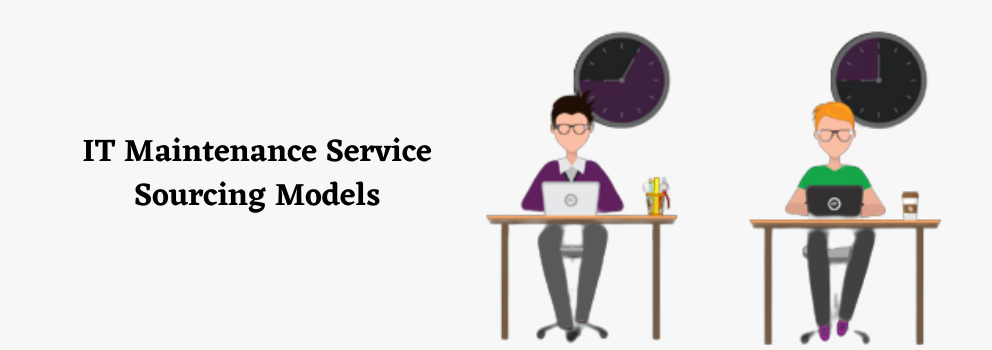
1st Model- Standard Packages- Shared Team
This is a package model where a certain unit of work (UoW) or a company is hired to handle a specific functionality of the business. They buy the IT company’s packages that is primarily L2/L3/L4 support and IT maintenance service.
The support team is primarily offshore-based. The support and IT maintenance service team assists multiple clients and ensures that all the app performance parameters are adhered to.
During the contract period based on the quarterly reviews, the customer has the flexibility to revisit the UOW bought and can adjust it as per trends going forward.
The members working under the team can be changed as the contract is signed on hourly basis, which means the IT company will give those particular working hours to the client.
The IT partner company manages the app enhancements, correction, adaptive services with management, and resources for the support team. The maintenance responsibility lies with the IT company.
2nd Model- Dedicated Support Team
Suppose, you already have an in-house IT team and are lacking a few members or need a team that is not in-house but is working only for your company.
In this case, the dedicated support model helps.
In this model, the IT partner company deploys a dedicated team according to the client’s requirements to provide support and IT maintenance services. It remains the same for the contract period and can cover L2 /L3/L4 support requirements. The team can be based at the onsite location and/or offshore, as per the need.
The model offers support performance parameters (SLA, SLA performance) that define the pricing. The major responsibility of app or software maintenance lire with the client.
Step 4: Maintaining the software and launching support
Timeframe: Launching- 1-2 days, maintaining is continuous tasks.
Set the service timeframes (e.g., 8/5, 12/5, 24/5, 24/7) before starting the IT maintenance service and support process. Regular maintenance windows for preventative maintenance tasks that can create downtimes should also be scheduled.
Even if they aren't used every time, these time intervals should always be available.
Here starts the main work of an IT software support and maintenance company.
Step 5: Service Level Agreement
Once the client's requirement is clear, the support team creates an SLA (Service Level Agreement) that specifies our response time and assures that our team is available to meet your demands.
Step 6: System Analysis
The support team is aware of all possible consequences of the defect, and we examine your systems to determine the root cause. While studying the code associated with the malfunctioning feature or function is part of the analysis process, it also includes determining other probable reasons such as out-of-date subscriptions and malware.
Step 7: Evaluation of the Solution
When it comes to resolving software issues, software engineers frequently come up with a variety of options. Before documenting the processes and consequences of all solutions, they scope out all possible affected features to guarantee that code changes don't cause any other problems in your system.
Step 8: Implementation
IT support team attempts to resolve all faults stated by using debugging tools, checking logs, and digging down to all lines of code that accompany faulty features and functions.
Step 9: Testing
A variety of leading unit tests are used by an IT organization to ensure proper delivery, correct problems, and ensure codebase reliability. They might release the bug patches to live production after verifying that all features and functions are stable and working as intended in our test environment.
Now we know how the support and maintenance team is set up process, let’s look at the human resources needed for the support and maintenance of your application.
Software Support Maintenance Requires Human Resources
The team may contain a variety of IT specialists, ranging from developers to UI designers, depending on the extent of software support and maintenance services.
The backbone specialists required for the project, which includes both on-demand and continuous support tasks, are listed below:
Engineers for application support:
- Software health checks and monitoring on a continuous basis.
- Identifying and resolving application performance issues.
- Problems with software configuration and account administration are being resolved.
- Investigate the logs for root cause analysis.
Software developers:
- Fixing bugs in the code and databases is the job of software developers.
- Developing new software features or components.
- Customizing software, integrating it with other systems, and migrating it.
Testing engineers:
- Functional, regression, integration, and other types of testing are performed on implemented updates, upgrades, and other software changes by test engineers.
DevOps engineers:
- Using the CI/CD approach, automate the software's change implementation and evolution.
- Physical and virtual servers, as well as their configurations, are managed.
- Cloud service configuration and optimization.
- Fixing infrastructure problems.
Required Members: Help desk professionals, application support engineers, software developers, QA and DevOps engineers are all required members of the team.
Entrust Your Software Application Support and Maintenance to Experts
Maintain your system with the changing world you reap the maximum benefits.
You won't have to worry about any troubles with our maintenance as a service because they'll be handled by specialists who are trained in development and design. We keep your systems working as intended with our software development company.
Feel free to reach out to us for a virtual coffee to discuss your business needs and requirements. Get in touch with Terasol’s experts now!
